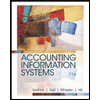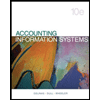
Intermediate Accounting
9th Edition
ISBN: 9781259722660
Author: J. David Spiceland, Mark W. Nelson, Wayne M Thomas
Publisher: McGraw-Hill Education
expand_more
expand_more
format_list_bulleted
Question
Chapter 1, Problem 1.9BYP
To determine
Accounting concepts and principles: Financial statements are prepared in accordance with the guidelines of “GAAP” (Generally Accepted Accounting principles). The main objective of GAAP is to protect the interest of the investors and ensure fair business practice.
Generally Accepted Accounting Principle (GAAP): Generally Accepted Accounting Principle (GAAP) is a common set of accounting principles, standards, and procedures that the companies must follow at the time of preparation of the financial statements.
To Explain: The reasons for not disclosing the
Expert Solution & Answer
Want to see the full answer?
Check out a sample textbook solution
Students have asked these similar questions
Calculate GP ratio round answers to decimal place
What is the gross profit percentage for this period
The company's gross margin percentage is ?
Chapter 1 Solutions
Intermediate Accounting
Ch. 1 - Prob. 1.1QCh. 1 - What is meant by the phrase efficient allocation...Ch. 1 - Identify two important variables to be considered...Ch. 1 - What must a company do in the long run to be able...Ch. 1 - Prob. 1.5QCh. 1 - Prob. 1.6QCh. 1 - Prob. 1.7QCh. 1 - Prob. 1.8QCh. 1 - Prob. 1.9QCh. 1 - Prob. 1.10Q
Ch. 1 - Prob. 1.11QCh. 1 - Prob. 1.12QCh. 1 - Prob. 1.13QCh. 1 - Prob. 1.14QCh. 1 - Prob. 1.15QCh. 1 - Explain what is meant by: The benefits of...Ch. 1 - Prob. 1.17QCh. 1 - Briefly define the financial accounting elements:...Ch. 1 - Prob. 1.19QCh. 1 - What is the going concern assumption?Ch. 1 - Prob. 1.21QCh. 1 - Prob. 1.22QCh. 1 - What are two advantages to basing the valuation of...Ch. 1 - Describe how revenue recognition relates to...Ch. 1 - What are the four different approaches to...Ch. 1 - In addition to the financial statement elements...Ch. 1 - Briefly describe the inputs that companies should...Ch. 1 - Prob. 1.28QCh. 1 - Prob. 1.29QCh. 1 - Prob. 1.30QCh. 1 - Prob. 1.31QCh. 1 - Prob. 1.32QCh. 1 - Accrual accounting LO12 Cash flows during the...Ch. 1 - Financial statement elements LO17 For each of the...Ch. 1 - Prob. 1.3BECh. 1 - Basic assumptions and principles LO17 through...Ch. 1 - Prob. 1.5BECh. 1 - Prob. 1.6BECh. 1 - Accrual accounting LO12 Listed below are several...Ch. 1 - Accrual accounting LO12 Listed below are several...Ch. 1 - Prob. 1.3ECh. 1 - Prob. 1.4ECh. 1 - Prob. 1.5ECh. 1 - Financial statement elements LO17 For each of the...Ch. 1 - Concepts; terminology; conceptual framework LO17...Ch. 1 - Prob. 1.8ECh. 1 - Prob. 1.9ECh. 1 - Prob. 1.10ECh. 1 - Basic assumptions and principles LO18, LO19...Ch. 1 - Prob. 1.12ECh. 1 - Prob. 1.13ECh. 1 - Prob. 1.14ECh. 1 - Prob. 1.15ECh. 1 - Prob. 1.1BYPCh. 1 - Research Case 12 Accessing SEC information through...Ch. 1 - Prob. 1.3BYPCh. 1 - Prob. 1.4BYPCh. 1 - Ethics Case 18 The auditors responsibility LO14...Ch. 1 - Prob. 1.9BYPCh. 1 - Judgment Case 110 GAAP, comparability, and the...Ch. 1 - Prob. 1.11BYPCh. 1 - Prob. 1.12BYPCh. 1 - Analysis Case 113 Expense recognition LO19...Ch. 1 - Prob. 1.14BYPCh. 1 - Real World Case 115 Elements; disclosures; The...Ch. 1 - Prob. 1.16BYPCh. 1 - Target Case LO19 Target Corporation prepares its...
Knowledge Booster
Similar questions
- Problem 19-13 (Algo) Shoney Video Concepts produces a line of video streaming servers that are linked to personal computers for storing movies. These devices have very fast access and large storage capacity. Shoney is trying to determine a production plan for the next 12 months. The main criterion for this plan is that the employment level is to be held constant over the period. Shoney is continuing in its R&D efforts to develop new applications and prefers not to cause any adverse feelings with the local workforce. For the same reason, all employees should put in full workweeks, even if that is not the lowest-cost alternative. The forecast for the next 12 months is MONTH FORECAST DEMAND January February March April 530 730 830 530 May June 330 230 July 130 August 130 September 230 October 630 730 800 November December Manufacturing cost is $210 per server, equally divided between materials and labor. Inventory storage cost is $4 per unit per month and is assigned based on the ending…arrow_forwardCompute 007s gross profit percentage and rate of inventory turnover for 2016arrow_forwardHeadland Company pays its office employee payroll weekly. Below is a partial list of employees and their payroll data for August. Because August is their vacation period, vacation pay is also listed. Earnings to Weekly Vacation Pay to Be Employee July 31 Pay Received in August Mark Hamill $5,180 $280 Karen Robbins 4,480 230 $460 Brent Kirk 3,680 190 380 Alec Guinness 8,380 330 Ken Sprouse 8,980 410 820 Assume that the federal income tax withheld is 10% of wages. Union dues withheld are 2% of wages. Vacations are taken the second and third weeks of August by Robbins, Kirk, and Sprouse. The state unemployment tax rate is 2.5% and the federal is 0.8%, both on a $7,000 maximum. The FICA rate is 7.65% on employee and employer on a maximum of $142,800 per employee. In addition, a 1.45% rate is charged both employer and employee for an employee's wages in excess of $142,800. Make the journal entries necessary for each of the four August payrolls. The entries for the payroll and for the…arrow_forward
- Subject. General accountingarrow_forwardCompute the assets turnover ratioarrow_forwardExercise 5-18 (Algo) Calculate receivables ratios (LO5-8) Below are amounts (in millions) from three companies' annual reports. WalCo TarMart Costbet Beginning Accounts Receivable $1,795 6,066 609 Ending Accounts Receivable $2,742 6,594 645 Net Sales $320,427 65,878 66,963 Required: 1. Calculate the receivables turnover ratio and the average collection period for WalCo, TarMart and CostGet 2. Which company appears most efficient in collecting cash from sales? Complete this question by entering your answers in the tabs below. Required 1 Required C Calculate the receivables turnover ratio and the average collection period for WalCo, TarMart and CostGet. (Enter your answers in millions rounded to 1 decimal place.) Receivables Turnover Ratio: WalCo S TarMart. S CostGet S Choose Numerator Choose Numerator "ValCo FarMart CostGet 320,427 $ 65.878 66,963 Choose Denominator Receivables turnover ratio 2,742.0 116.9 times 0 times 0 times Average Collection Period Choose Denominator Average…arrow_forward
arrow_back_ios
SEE MORE QUESTIONS
arrow_forward_ios
Recommended textbooks for you
 Accounting Information SystemsFinanceISBN:9781337552127Author:Ulric J. Gelinas, Richard B. Dull, Patrick Wheeler, Mary Callahan HillPublisher:Cengage LearningPrinciples of Accounting Volume 2AccountingISBN:9781947172609Author:OpenStaxPublisher:OpenStax College
Accounting Information SystemsFinanceISBN:9781337552127Author:Ulric J. Gelinas, Richard B. Dull, Patrick Wheeler, Mary Callahan HillPublisher:Cengage LearningPrinciples of Accounting Volume 2AccountingISBN:9781947172609Author:OpenStaxPublisher:OpenStax College Pkg Acc Infor Systems MS VISIO CDFinanceISBN:9781133935940Author:Ulric J. GelinasPublisher:CENGAGE L
Pkg Acc Infor Systems MS VISIO CDFinanceISBN:9781133935940Author:Ulric J. GelinasPublisher:CENGAGE L

Accounting Information Systems
Finance
ISBN:9781337552127
Author:Ulric J. Gelinas, Richard B. Dull, Patrick Wheeler, Mary Callahan Hill
Publisher:Cengage Learning

Principles of Accounting Volume 2
Accounting
ISBN:9781947172609
Author:OpenStax
Publisher:OpenStax College

Pkg Acc Infor Systems MS VISIO CD
Finance
ISBN:9781133935940
Author:Ulric J. Gelinas
Publisher:CENGAGE L
